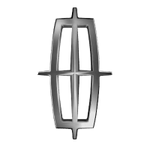Description
After returning from a trip to Europe in 1938, Edsel Ford went to the Ford Company's head designer (his good friend Bob Gregorie) and asked him to build a 'strictly continental' car for his personal use. Starting with the chassis of the existing Lincoln Zephyr, Gregorie moved the driver's seat back, elongated the hood and front fenders, lowered the roof by three inches, and sectioned and lowered the cowl four inches to match the hood. Edsel was pleased with the results and construction of the car began. Once finished, the car was shipped to Florida where Edsel drove it around Palm Beach. Within weeks Edsel wired Gregorie, explaining that he could have filled his pockets with pre-orders from his wealthy friends and neighbours. Production quickly proceeded.
Edsel Ford was the only son of Henry Ford, but the two men could not have been more different. Edsel Ford was worldly, gifted with fine taste and a patron of the arts – including his many personally funded commissions that helped American coach-builders survive the early years of the Great Depression. It is an irony then that the automobile created to be a tribute to Edsel Ford instead became an embarrassment when it was introduced 14 years after Edsel’s early death in 1943, at the age of 49. In his highly productive lifetime, Edsel Ford become president of Ford Motor Company and encouraged Ford’s purchase of the Lincoln Motor Company from the founding Lelands. He persuaded his father to discontinue production of the Model T – the most successful car in the world at the time – and he led the development of the stylish Model A that was sometimes referred to as ‘a little Lincoln’. He also created the first styling department at Ford in 1935, hiring E. T. ‘Bob’ Gregorie as styling director.
The idea of for the Lincoln Continental came directly from Edsel Ford’s worldly view. The story has been told many times that the younger Ford returned from a European trip struck with the coachwork he observed travelling on the Continent. Ford tasked Bob Gregorie to create a custom coach-built automobile on a Lincoln Zephyr chassis with the clean, unadorned lines and minimal chrome trim of the European cars he admired. The first Lincoln Continental prototype was shipped to Florida in March 1939, where Edsel Ford and his family wintered at Hobe Sound near Palm Beach. Edsel Ford’s Continental-style Lincoln was greeted with rave reviews and questions about production from just the crowd he hoped to attract. A second prototype was constructed for refinement and the Lincoln Continental went into production just six months later in October 1939 as a 1940 model.
Like the first prototype, the Continental was constructed with the same 125- inch chassis as the Lincoln Zephyr. The engine in the first production Continental was a 292 c. i. flathead V-12 producing 120 horsepower, with a three-speed column shifter. The body was all new. In comparison with the Zephyr, the driver’s seat was moved back, the hood was longer and both the roof and the side profile of the car were dramatically lowered. The Cabriolet, like the prototypes, had closed rear roof quarters that visually stretched the length of the car together with the spare tire mounted at the rear of the car. The extensively revised 1942 Lincoln Continental shared the Zephyr’s new styling format that was distinguished by a lower ride height and squared off fenders as well as the Zephyr’s wider, two-piece grille. Engine size increased to 306 c. i. with 130 horsepower. Like all of the industry, 1942 Lincoln production was cut short for the war effort and a total of only 1, 236 1942 Lincolns were produced including just 136 Cabriolets.
This automobile is one of only a few 1942 Lincoln Continental Cabriolets that are thought to survive. The subject of an older ground up restoration, the car presents beautifully today. Finished in Chetwyn Beige, with a tan leather interior and a dark tan top, the condition of the leather is very good showing only very slight signs of use on the driver’s side. The paint quality is very good, with nice panel fit and finish. The fully restored dashboard is pure 1940s glamour that gleams an elegant compliment to both the exterior and the interior. Being a very prestigious car in its day, it is well-equipped with a radio, heater, power vacuum windows, power operated convertible top, clock, and full instrumentation. The wheels are finished with correct chrome hubcaps and trim rings that are in very good condition and the polished chrome trim on the exterior is also in very good condition. The flathead V12 engine looks impressive and is very well detailed in the engine bay. This engine was never intended to make big power, but rather, it was highly regarded for its smoothness in operation. Quiet, silky and with a broad, flat torque curve, it provides effortless operation whether tooling around town or touring long distances on main roads. A three speed manual transmission feeds power to a standard Columbia












